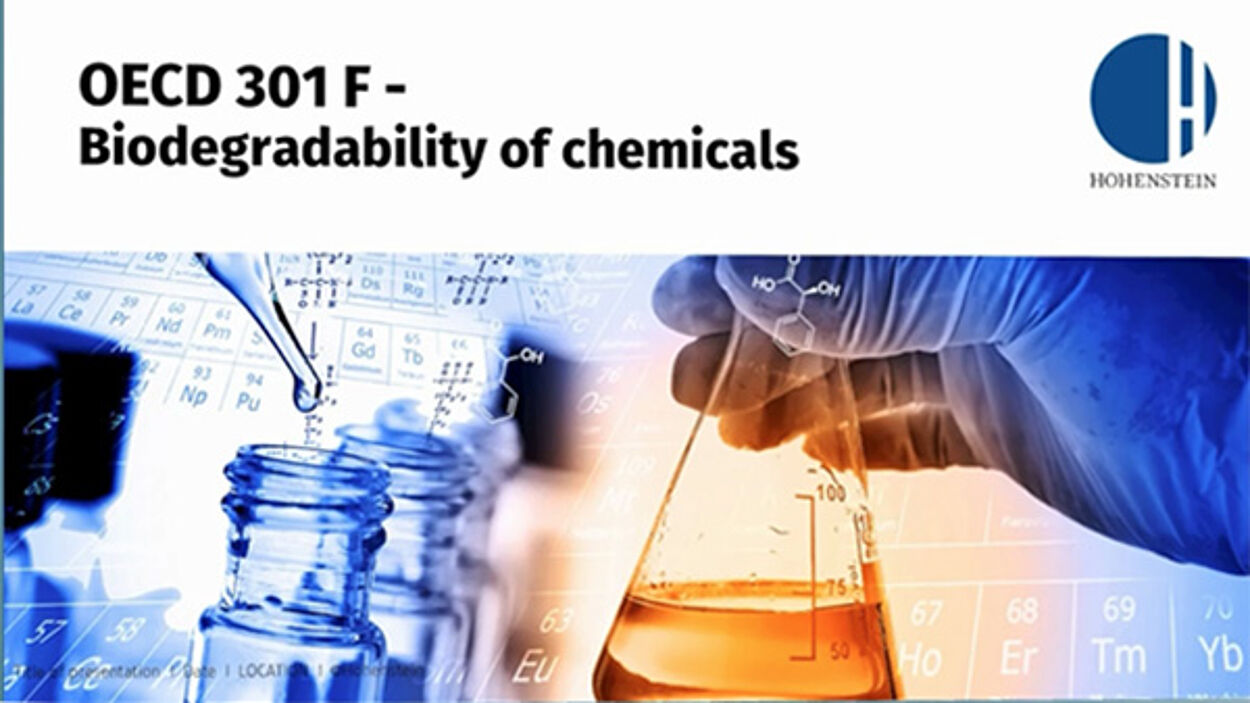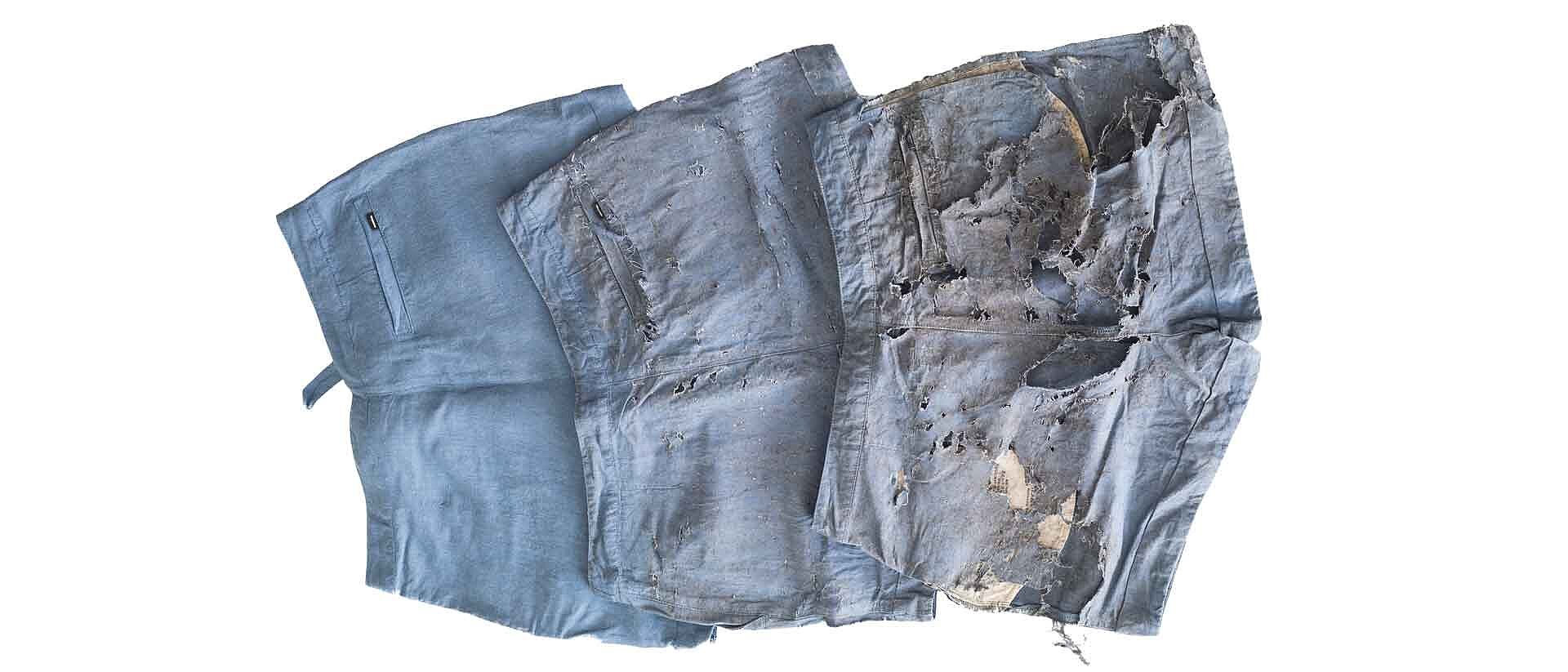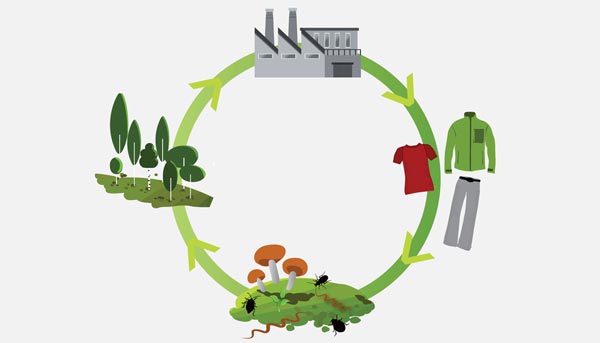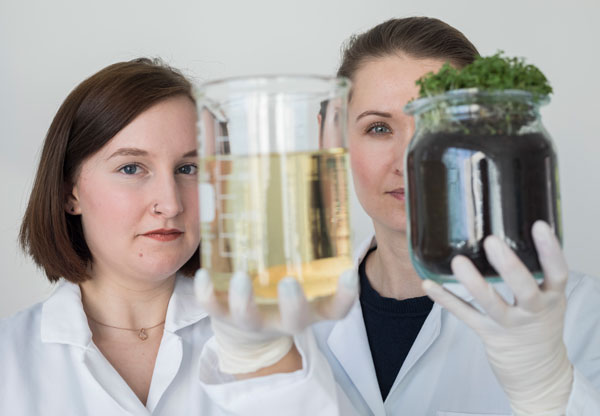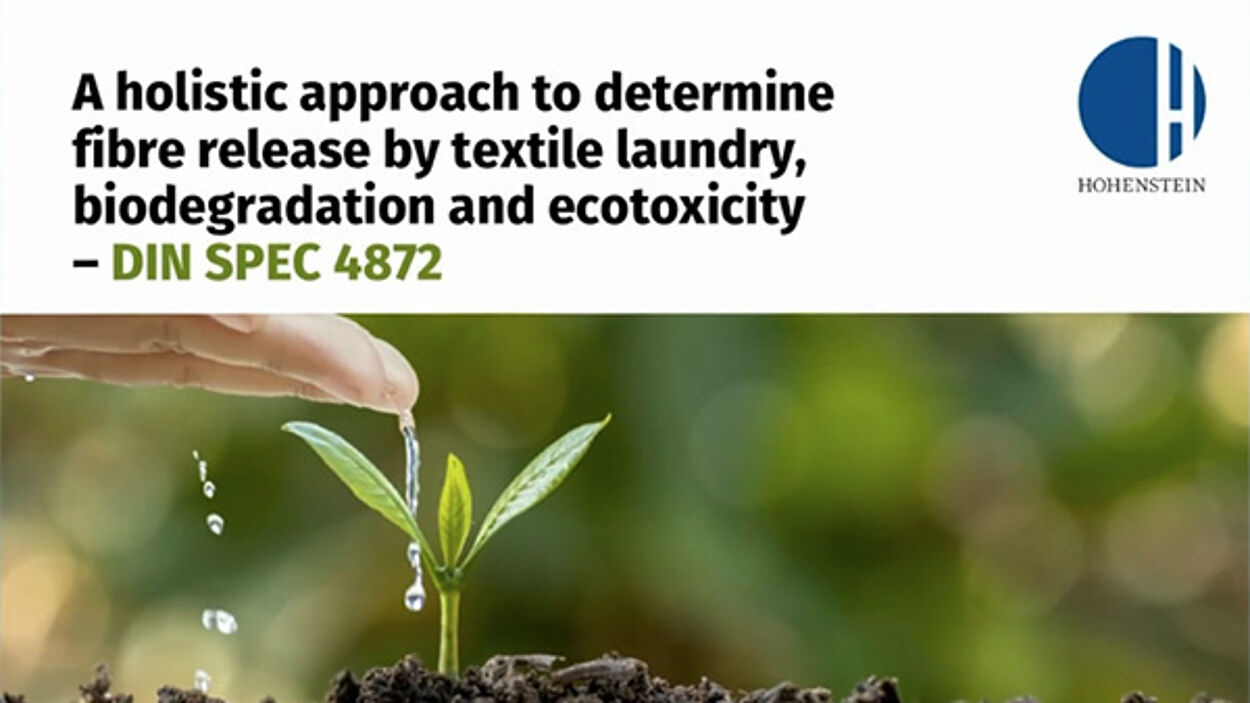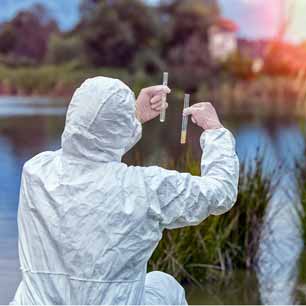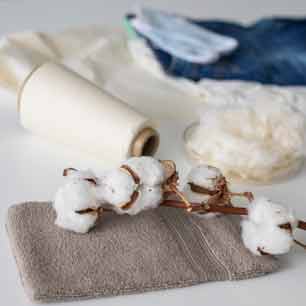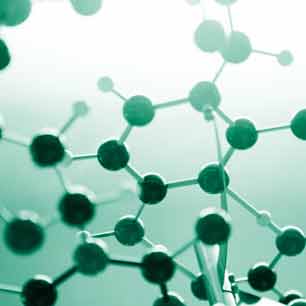OECD 301 F: Testing Biodegradability Testing of Chemicals
This test method defines the biodegradability of a chemical. It can be used for soluble and insoluble chemicals, such as detergents, cleaners, industrial chemicals (per REACH regulation), drugs and cosmetics. It categorizes the speed and degree of biodegradation at 22°C (71.6°F) within 28 days and further classifies inherent and persistent biodegradability.
To pass the OECD 301 F manometric respiration test, the chemical must biodegrade by at least 60% within 10 days.
